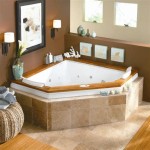Living Room Dining Combination Decorating Ideas
The modern home often faces the challenge of maximizing space, leading to the popular trend of combining living and dining areas. This arrangement presents both opportunities and challenges in terms of design and functionality. Successful integration of these two distinct spaces requires careful consideration of layout, furniture selection, color palettes, and overall aesthetic coherence. The following sections will explore various decorating ideas and principles to create a harmonious and practical living room dining combination.
Considering the dual function of the space, it is crucial to establish a clear visual distinction between the living and dining areas. This division can be achieved through several techniques, without necessarily resorting to physical barriers like walls. The goal is to create zones within the larger space that feel distinct yet connected, contributing to a unified and balanced interior.
Defining Spaces Through Rugs and Flooring
One of the most effective ways to define the living and dining areas is through the use of rugs. A large area rug placed beneath the living room seating arrangement instantly anchors the space, creating a visual boundary. Similarly, a rug under the dining table defines the eating area. The rugs do not need to match perfectly, but they should complement each other in terms of color, pattern, and texture to maintain a cohesive look. Consider using rugs with different textures to further delineate the zones – for instance, a plush rug in the living room and a more durable, easier-to-clean rug in the dining area.
Beyond rugs, the flooring itself can play a significant role in defining spaces. If possible, consider using different flooring materials in each area. For example, hardwood flooring could be used in the dining area for its durability and elegance, while carpet could be used in the living room for warmth and comfort. If changing the flooring is not feasible, strategically placed runners or floor tiles can also create visual separation. Another option is to use contrasting flooring colors or patterns to delineate the different zones within the combined space.
The choice of rug size is also critical. A rug that is too small will make the room feel disjointed, while a rug that is too large can overwhelm the space. In the living room, the rug should ideally be large enough to accommodate all the front legs of the furniture, or even all the legs if the space allows. In the dining area, the rug should be large enough to extend beyond the chairs when they are pulled out from the table. Ensuring the appropriate rug size will contribute significantly to the overall visual harmony of the combined space.
Furniture Selection and Placement
Careful furniture selection is paramount in a living room dining combination. Opt for pieces that are multi-functional and space-saving. The furniture should complement the design style of both areas and contribute to a sense of flow throughout the combined space. Consider scale and proportion when choosing furniture to avoid overwhelming the room or making it feel cramped.
For the living room area, a sectional sofa can provide ample seating while also defining the space. Consider a sectional with a low back to maintain an open feel. Coffee tables with storage compartments are excellent for stowing away clutter and maximizing space. Chairs should be comfortable and stylish, and their placement should encourage conversation and interaction.
In the dining area, a table that can be extended to accommodate extra guests is a practical choice. Round tables can work well in smaller spaces, as they allow for easier movement around the room. Chairs should be comfortable and supportive, and their design should complement the style of the table. Consider using benches instead of chairs on one side of the table to save space and create a more casual atmosphere. Display cabinets or shelves can be used to store dining essentials and decorative items, adding visual interest to the space.
The placement of furniture is just as important as the selection. Avoid blocking pathways and ensure that there is enough space to move freely between the living and dining areas. Consider the natural flow of traffic and arrange furniture accordingly. Creating a focal point in each area, such as a fireplace in the living room or a statement light fixture above the dining table, can help to define the spaces and draw the eye.
Color Palette and Decorative Accents
The color palette is a unifying element that can tie the living and dining areas together. A consistent color scheme throughout the combined space will create a sense of harmony and flow. Consider using a neutral base color and then adding pops of color through accessories, artwork, and textiles. Different shades of the same color can be used to create depth and visual interest.
For example, a neutral color like beige, gray, or off-white can be used on the walls and larger furniture pieces. Then, accent colors like blue, green, or yellow can be introduced through throw pillows, curtains, and rugs. Artwork can also be used to inject color and personality into the space. Consider using artwork that complements the color scheme of both areas to create a cohesive look.
Decorative accents play a crucial role in adding character and personality to the combined space. Use accessories to tie the two areas together, such as matching vases, candles, or picture frames. Plants can also be used to add a touch of nature and freshness to the room. Consider using plants of varying sizes and textures to create visual interest. Wall decor should be carefully chosen to complement the overall style of the room. Mirrors can be used to create the illusion of more space and light. Shelves can be used to display books, decorative objects, and personal items, adding a touch of personality to the space.
Lighting is another important element to consider. Use a combination of ambient, task, and accent lighting to create a warm and inviting atmosphere. In the living room area, consider using table lamps, floor lamps, and recessed lighting to provide adequate illumination. In the dining area, a statement chandelier or pendant light above the table can create a focal point and provide task lighting. Dimmers can also be used to adjust the lighting to suit different moods and activities. Natural light should be maximized by keeping windows clear and using light-colored curtains or blinds. The strategic use of lighting can significantly enhance the ambiance of the combined living and dining area.
Maintaining a cohesive aesthetic is crucial for a successful living room and dining area combination. This involves selecting a consistent design style, whether it's modern, traditional, bohemian, or eclectic. The furniture, colors, and accessories should reflect this style and create a sense of unity throughout the space. If the style is modern, consider using clean lines, minimalist furniture, and a neutral color palette. If the style is traditional, consider using classic furniture, rich colors, and ornate details. If the style is bohemian, consider using eclectic furniture, vibrant colors, and unique accessories. Regardless of the chosen style, consistency is key to creating a harmonious and well-designed space. By carefully considering all of these elements, it is possible to create a living room dining combination that is both functional and aesthetically pleasing.
Ultimately, the success of a living room dining combination lies in creating a space that is both beautiful and functional. By carefully considering the layout, furniture, color palette, and decorative accents, it is possible to create a space that meets the needs of the occupants and reflects their personal style. The key is to create a sense of flow and cohesion between the two areas, while also defining them as distinct spaces. With thoughtful planning and execution, a living room dining combination can be a stylish and practical solution for modern living.

5 Tips For Decorating A Combined Living Dining Room Happily Ever After Etc

Living Room And Dining Design Ideas Designcafe

5 Tips For Decorating A Combined Living Dining Room Happily Ever After Etc

Living Room Dining Combo Ideas With Tricks Doğtaş

Get The Ideal Rectangle Living Room Dining Combo Now

Living Room Dining Combo Ideas With Tricks Doğtaş

Living Room And Dining Design Ideas Designcafe

Living Room Dining Combo Ideas Decorilla Portfolio

Marvelous Design Space Saving Dining Room For Your Apartment Https Hometoz Com Spa Living Combo Small

Living Room Dining Combo Ideas With Tricks Doğtaş







